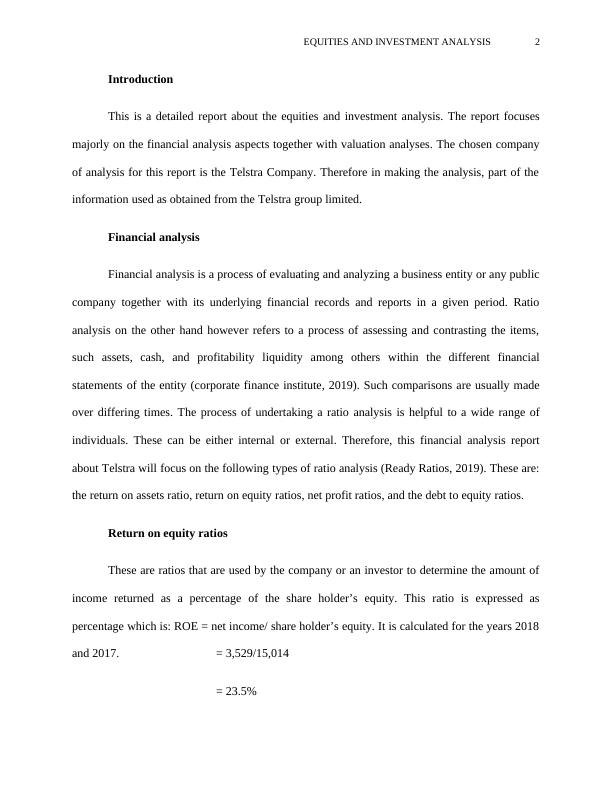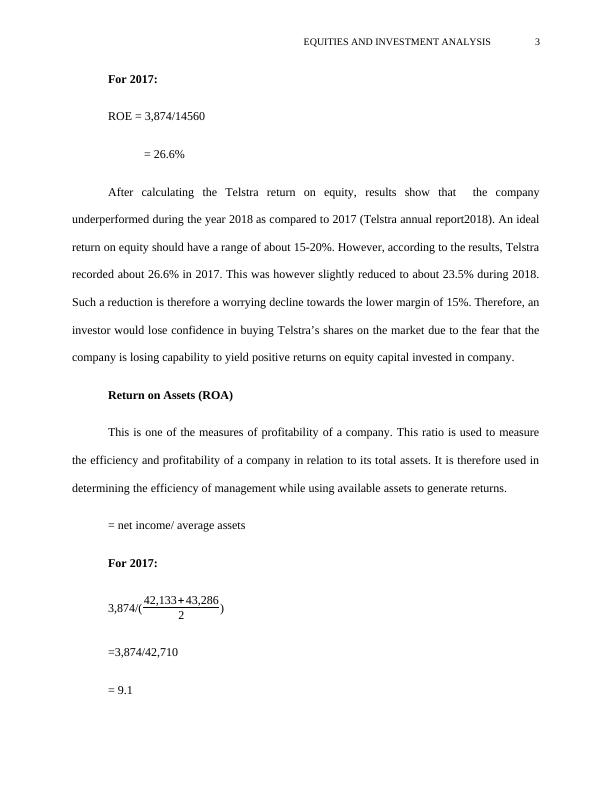Equities and Investment Analysis
Prepare an equity research report for an ASX listed firm.
9 Pages1191 Words152 Views
Added on 2022-11-29
About This Document
This report provides a detailed analysis of equities and investment, focusing on financial analysis and valuation. The chosen company for analysis is Telstra. The report covers return on equity ratios, return on assets, and debt to equity ratios.
Equities and Investment Analysis
Prepare an equity research report for an ASX listed firm.
Added on 2022-11-29
ShareRelated Documents
End of preview
Want to access all the pages? Upload your documents or become a member.
Analytical Procedures in Auditing: A Case Study of Auswide Bank
|6
|1433
|54
Profit Margin Ratio Analysis
|4
|606
|15
Environmental and financial aspects of the company YRR
|14
|3409
|288
Financial Accounting Assignment - Whitbread Plc (U.K) and Greene King Plc (U.K)
|9
|2506
|444
Analysis of financial performance Contents
|10
|2700
|129
Accounting and Finance Assignment : Next PLC
|13
|3607
|773



